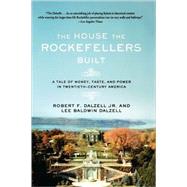
Note: Supplemental materials are not guaranteed with Rental or Used book purchases.
Purchase Benefits
What is included with this book?
Robert F. Dalzell is Ephraim Williams Professor of American History at Williams College, and is the author of Enterprising Elite: The Boston Associates and the World They Made and Daniel Webster and the Trial of American Nationalism.
Lee Baldwin Dalzell was for many years the head of the Reference Department at the Williams College Library. The two collaborated on George Washington?s Mount Vernon: At Home in Revolutionary America.
| Preface | p. xiii |
| Introduction: Sic Transit...December 1991 | p. 1 |
| Great Good Fortune | |
| Heir Apparent, 1902 | p. 9 |
| Titan, Husband, Father | p. 24 |
| Building | |
| Kykuit Rising I | p. 47 |
| "For the Sake of Harmony" | p. 67 |
| "The Fruits of the Spirit" | p. 82 |
| Kykuit Rising II | p. 100 |
| Settling Up | p. 125 |
| Interlude | |
| Patriarch | p. 145 |
| Family Seat | p. 167 |
| The Prince of Kykuit | p. 196 |
| Legacy | |
| The Gift | p. 227 |
| Going Public | p. 249 |
| Coda | p. 279 |
| Acknowledgments | p. 281 |
| Notes | p. 285 |
| Index | p. 321 |
| Table of Contents provided by Ingram. All Rights Reserved. |
The New copy of this book will include any supplemental materials advertised. Please check the title of the book to determine if it should include any access cards, study guides, lab manuals, CDs, etc.
The Used, Rental and eBook copies of this book are not guaranteed to include any supplemental materials. Typically, only the book itself is included. This is true even if the title states it includes any access cards, study guides, lab manuals, CDs, etc.
Excerpted from The House the Rockefellers Built: A Tale of Money, Taste, and Power in Twentieth-Century America by Robert F. Dalzell, Lee Baldwin Dalzell
All rights reserved by the original copyright owners. Excerpts are provided for display purposes only and may not be reproduced, reprinted or distributed without the written permission of the publisher.